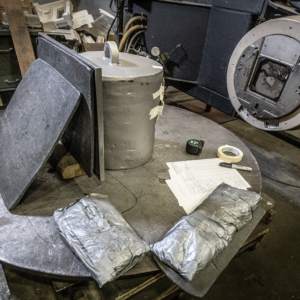Radiographic Inspection of Castings
X-Ray Testing
Radiographic inspection of castings, or the x-ray method is a nondestructive testing method used to identify casting impurities or quality issues within a casting that may not be visible to the naked eye. This form of testing is usually used on high specification parts.
Background
In 1958, a committee under the auspices of the ASTM began to formulate a group of radiographs for referencing thin-walled castings. This work culminated in ASTM Specification E192-62T, Reference Radiographs of Investment steel castings for Aerospace Applications. This specification was adopted by the military, and MIL-STD-2175 makes use of this specification for thin-walled steel castings. Reference radiographs were also issued by the Navy under specification NAVWEPS 00-PK-500. In 1966, the ASTM adopted E 192 as a permanent specification. Although both the ASTM specification and MIL-STD-2175 are references most often for aerospace applications, their use is also prevalent for commercial investment castings.
There are significant benefits in having a set of reference radiographs, but their use can be dangerous unless those persons who set the standards are familiar with the specific requirements of individual parts and the effect of discontinuities on their function. There is a tendency to overgrade or overclassify a casting or an area of a casting. The military specification – cognizant of this tendency – issued a warning in the last paragraph of MIL-STD-2175:
Producibility Warning: Caution should be exercised in specifying the grade of maximum permissible radiographic discontinuity level to be met by a casting.
Casting design coupled with Foundry practice can make too severe soundness requirements impractical for a manufacturer to satisfy. The class assigned to the casting should represent a realistic value for the functional requirement, i.e., do not assign a class 1 for a class 4 function.


